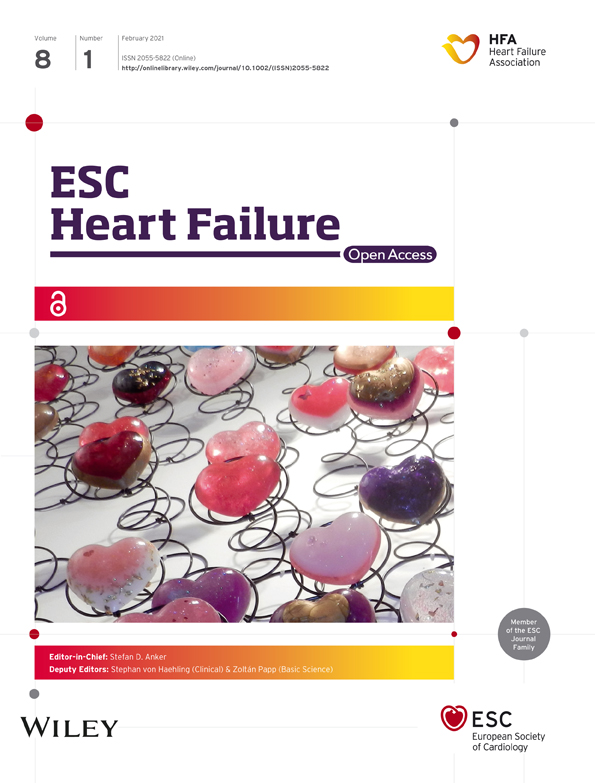Clinical characteristics and outcomes of black African heart failure patients with preserved, mid-range, and reduced ejection fraction: a post hoc analysis of the THESUS-HF registry
Abstract
Aims
Limited data are available on clinical characteristics and prognosis of heart failure (HF) in black African populations especially with respect to current classifications and HF management guidelines.
Methods and results
In this post hoc analysis, African patients admitted with acute HF and enrolled in the THESUS-HF registry in one of 12 hospitals in 9 countries were classified as having preserved left ventricular ejection fraction (LVEF) (HFpEF), mid-range LVEF (HFmrEF), and reduced LVEF (HFrEF) based on echocardiography performed close to the time of admission. Sociodemographic and clinical characteristics, management, and 60 and 180 day outcomes were compared between the groups. Of 888 patients with LVEF available, there were 472 (53.2%) with HFrEF, 174 (19.6%) with HFmrEF, and 243 (27.3%) with HFpEF. History of atrial fibrillation was higher in patients with HFmrEF (28.5%) than in patients with HFrEF (14.5%). Patients with HFrEF had a larger mean LV systolic diameter (54.1 ± 9.67 mm) than patients with HFmrEF (42.9 ± 8.47 mm), who had a larger mean LV diameter than patients with HFpEF (32.6 ± 8.64 mm); a similar pattern with LV diastolic diameter was observed. The mean posterior diastolic wall thickness (10.2 ± 2.94 mm) was lower in patients with HFrEF than in those with HFmrEF (11.1 ± 2.59 mm) and HFpEF (11.2 ± 2.90 mm). Patients with HFpEF were less likely to use angiotensin-converting enzyme inhibitor/angiotensin receptor blockers, and aldosterone inhibitors, and more likely to use beta-blockers than those with HFrEF at either admission or discharge/Day 7. Death or readmission rates through Day 60 and 180 day death rates did not differ significantly among the groups; unadjusted hazard ratios relative to patients with HFrEF were 1.32 [95% confidence interval (CI) 0.84–2.08] and 1.24 (95% CI 0.82–1.89) for 60 day death or readmission and 0.92 (95% CI 0.59–1.43) and 0.78 (95% CI 0.51–1.20) for 180 day death in patients with HFmrEF and HFpEF, respectively.
Conclusions
Classification by LVEF according to European Society of Cardiology guidelines revealed some differences in clinical presentation but similar mortality and rehospitalization rates across all EF groups in Africans admitted for HF.
Conflict of interest
Drs Cotter and Davison report grants from Abbott Laboratories, Amgen Inc., Celyad, Cirius Therapeutics Inc., Sanofi, Roche Diagnostics Inc., Trevena Inc., Ventrix, and Windtree Therapeutics, Inc. None reported for all other authors.




